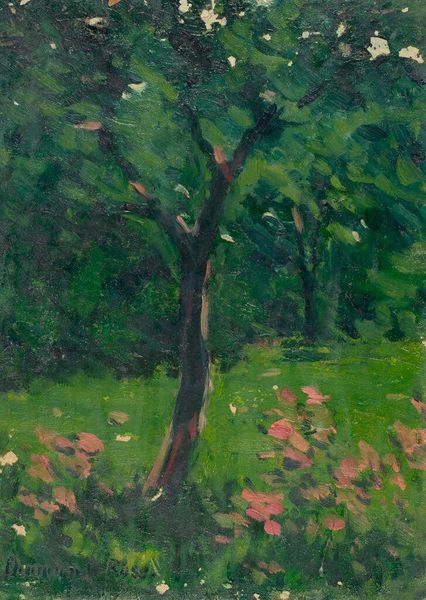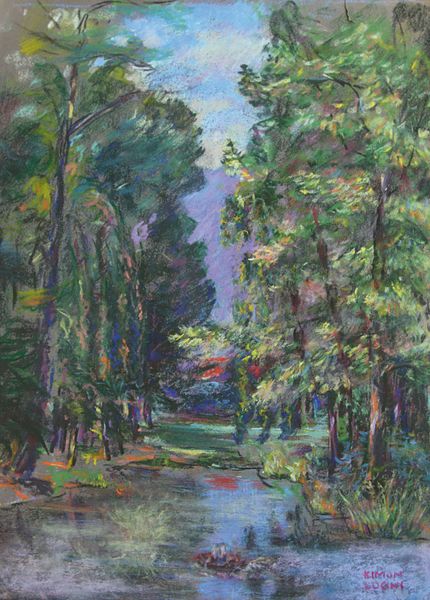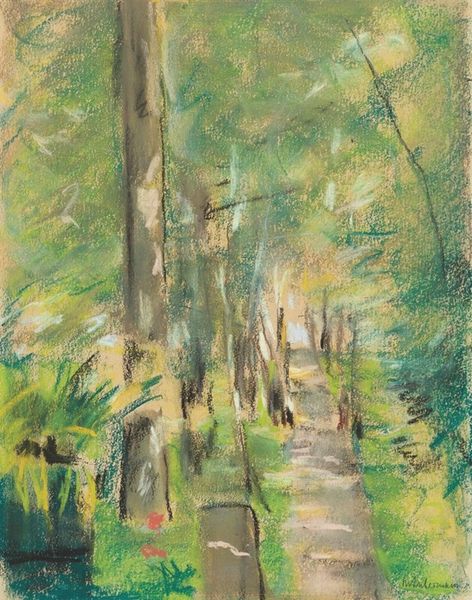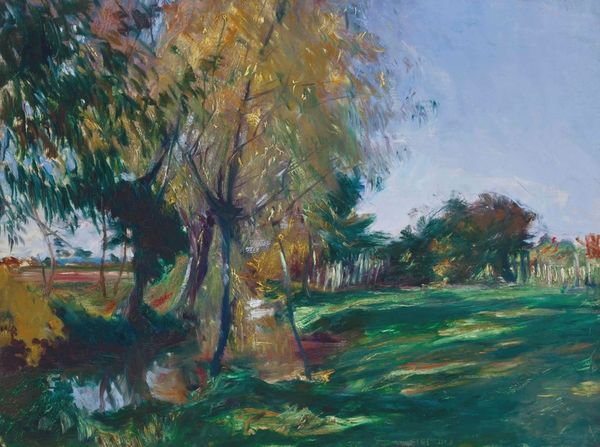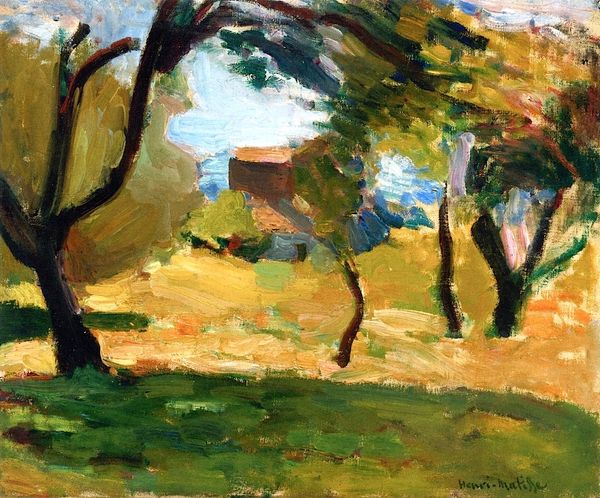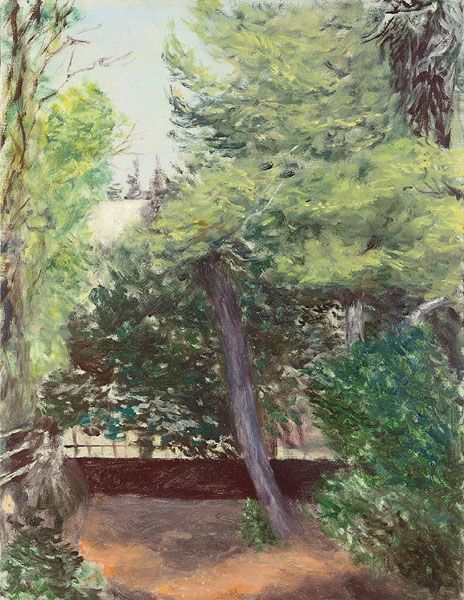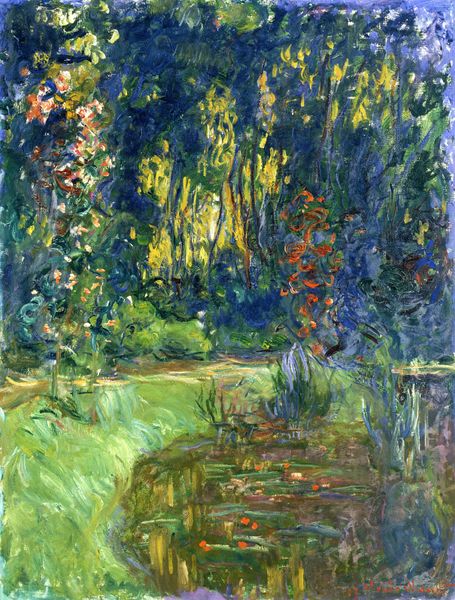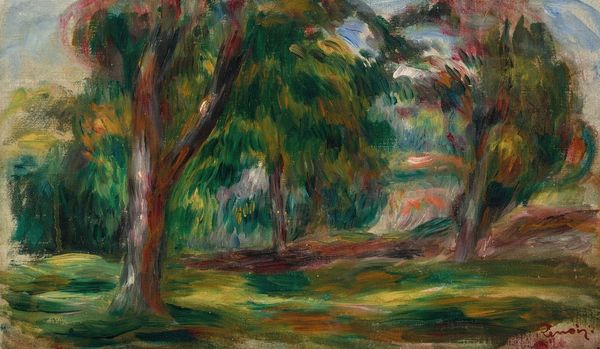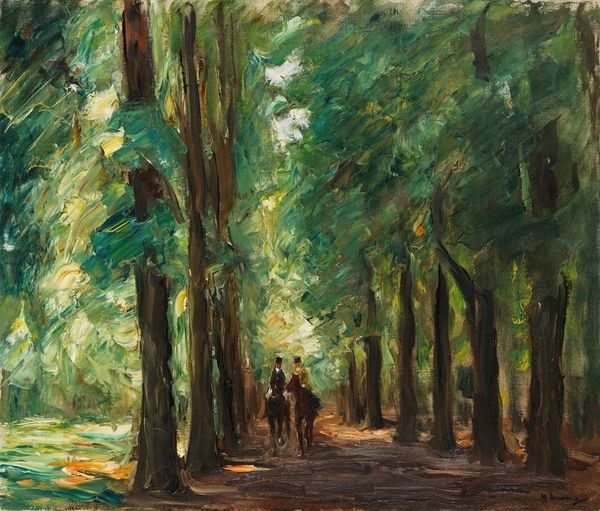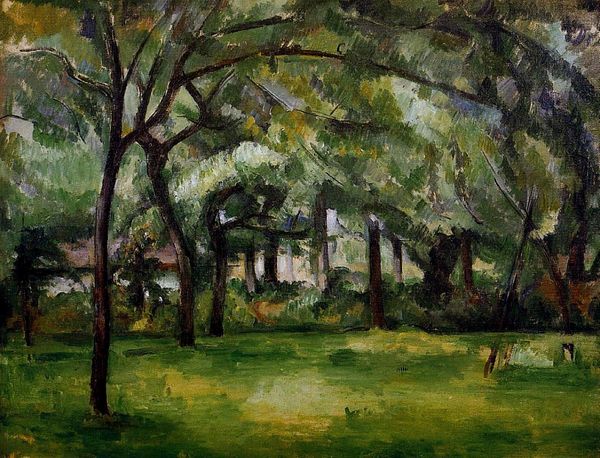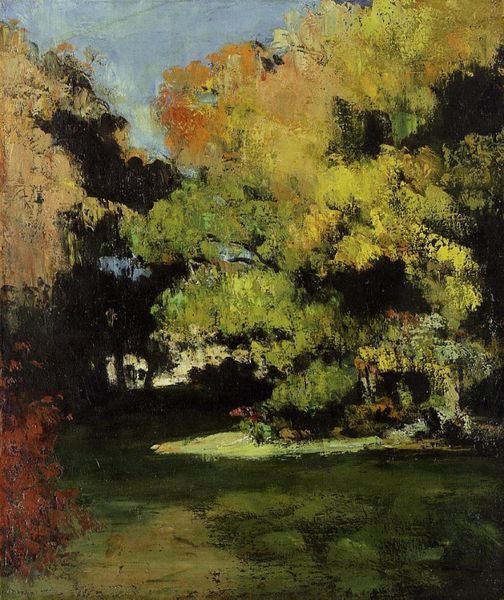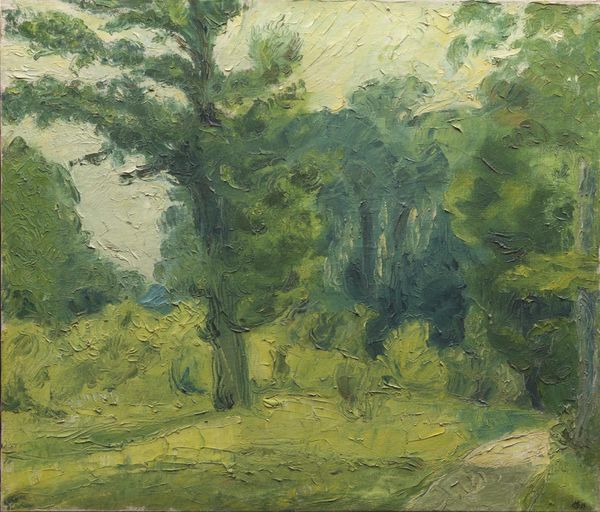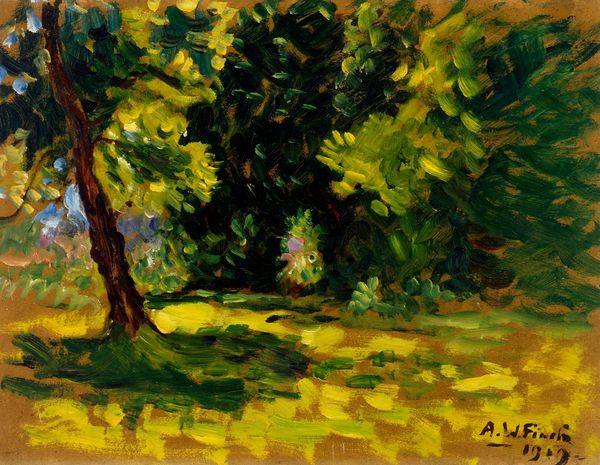
Copyright: Public Domain: Artvee
Editor: Here we have Max Liebermann’s “Birkenallee im Wannseegarten nach Osten, Wohl,” painted in 1924, using oil on canvas. It’s a lovely view, all greens and browns… it feels so serene. What do you see in this piece? Curator: The overwhelming green speaks to the natural world, obviously, but consider its depth. Green is often linked with growth, renewal, and hope, yet in certain contexts it can signal envy or even toxicity. Liebermann's application, the thick brushstrokes, create a surface alive with both. Editor: Toxicity? That's unexpected, considering the scene. Curator: Think about the era, the interwar period in Germany. Could this vibrant scene also represent an escape, a yearning for simpler times, as the shadows of political unrest began to lengthen? The careful lines of trees, are they offering protection, or creating a kind of visual cage? Notice the play of light and shadow—are they comforting or unsettling? Editor: I hadn’t thought of it that way, but the shadows *are* pretty stark. So you’re saying even a landscape can hold darker symbols? Curator: Precisely. Art often works on multiple layers. These paintings, ostensibly just landscapes, could be carrying deeper anxieties and desires of a society on the cusp of immense change. And the single, dominating tree at the front... what does it stand for? Stability? Resistance? Editor: Wow, I’ll definitely look at landscapes differently now. It’s not just about pretty scenery! Curator: Indeed! Landscapes often reflect inner states, anxieties, hopes. It is important to consider these visual symbols in the cultural moment of their making.
Comments
No comments
Be the first to comment and join the conversation on the ultimate creative platform.
